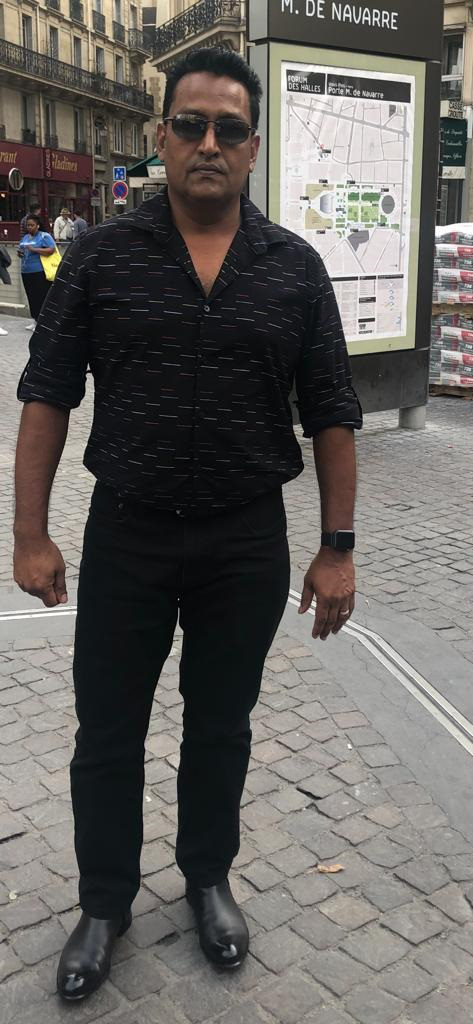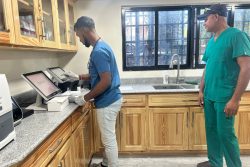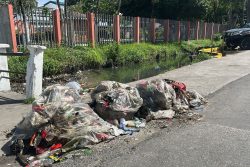One day after he was given the all clear to leave isolation following his negative Covid-19 result, businessman Sean Ramrattan opted to donate his plasma to help “persons in worst case scenarios.
“I recognized and they recognized that you could use the antibodies of persons who recover from the coronavirus to help others even though it can’t help everybody. I didn’t lose anything, they explained that you could build back your plasma within seven days once you have a healthy diet,” Ramrattan told Stabroek Weekend.
Ramrattan, the Chief Executive Officer of the popular RRT Enterprise on Regent Street, was released from isolation last Monday and it was on Tuesday that he received a call from the National Blood Transfusion Service to donate his plasma.
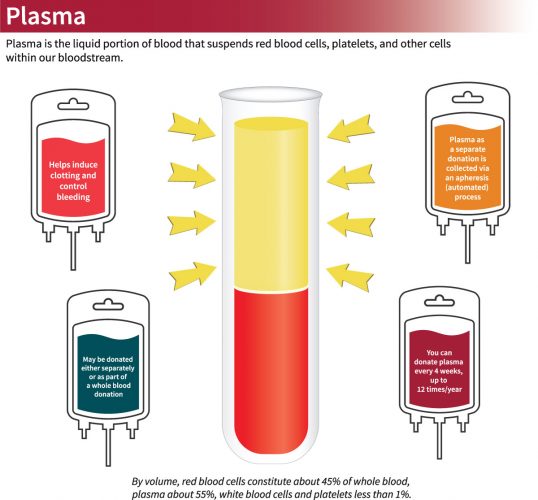
Without hesitation, he agreed. He explained that the blood bank currently needs the plasma more than blood, while indicating that as explained to him by the bank, they check persons for symptoms of the virus before accepting blood but made it clear that the virus cannot be transmitted through blood.
Only last week, Deputy Chief Medical Officer Dr Karen Gordon-Boyle had said that Guyana is looking at the use of plasma of persons who have recovered from the disease.
“The plasma of such persons would be rich in antibodies and that can possibly help someone who is struggling to have enough antibodies,” she had said, adding that it has been used in other countries even though it is not yet approved by the World Health Organisation.
It was a philosophical Ramrattan who spoke to Stabroek Weekend about his experience of being diagnosed with the virus and the treatment. While it was not all smooth sailing for him, looking back he now sees it as one which has taught him about living and gives him more appreciation for being alive.
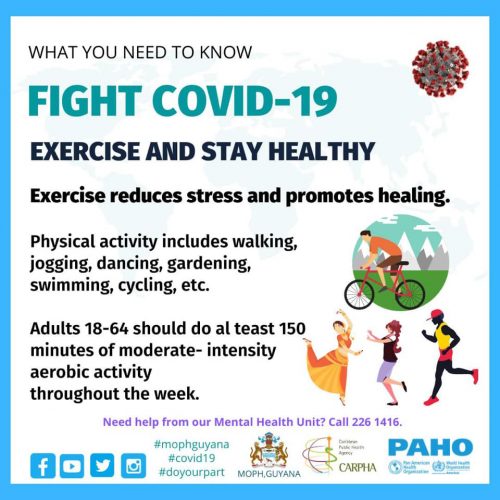 The businessman believes he contracted the virus since about March 20, but it was not until April 10 that he received the confirmation and was finally taken into isolation where he remained until April 27. He wanted to tell his story to hammer home the point to Guyanese that the virus is real and that they need to take the necessary precautions to protect themselves and others.
The businessman believes he contracted the virus since about March 20, but it was not until April 10 that he received the confirmation and was finally taken into isolation where he remained until April 27. He wanted to tell his story to hammer home the point to Guyanese that the virus is real and that they need to take the necessary precautions to protect themselves and others.
‘I don’t know where’
The father of three lives in the US but travels to Guyana often. On February 26, he arrived in Guyana.
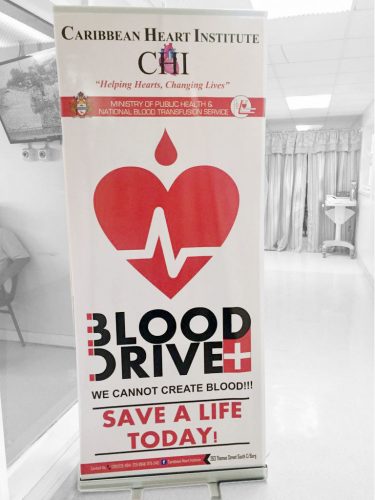
“I don’t know where I got it,” he said but revealed that it was on March 20 that he started to get a “little itching of the throat, but nothing to worry about at that point and time.”
But by March 25, “this thing start progressing,” Ramrattan said and he started having chills and intermittent fever.
“It was like you know when the women say they are going through menopause, they getting hot flashes. Well, it was like if I was getting hot flashes. I was feeling hot suddenly and start sweating profusely and in about an hour I would feel brand new again. Like if I exercised and took a bath, that is how I was feeling,” the father of three said.
By then he became worried and he started calling up friends in the medical field and he also did his own online investigation even as the fever began to progress but at that time, he was not taking any medication.
But following advice he began taking the locally made chloroquine and an antibiotic around April 2, and he took that course for seven days. The fever reduced and instead of it breaking every hour it went to about every 12 hours. Ramrattan said he called the Covid-19 hotline on April 8, was tested the following day and on April 10 he received the positive results. By then, the last of the heavy fever had passed.
“They called and gave me the results…,” Ramrattan said, pausing.
“At that point and time, I was confused, as a human being I was confused,” he confessed when asked how he felt.
“I couldn’t recognize what I was confused about. I called some close relatives and told them and like any other thing everyone became worried,” he added, pointing out that once a person gets a positive result they would think about the worst-case scenario of death not recognizing the data of more persons surviving rather than dying.
Following the positive result, he was given an hour to prepare for isolation and in the confusion, his blood pressure went up and when he was taken to the doctor’s quarters next to the Georgetown Public Hospital, which has been converted into an isolation centre, that was his state.
Environment was okay
Upon arrival at the centre, Ramrattan said, he found the environment to be okay. His only concern was the fact that it only had one bathroom and two toilets servicing seven rooms, each of which was occupied by one individual, even though the rooms had two beds. He was informed that if needs to be another person could be placed in the room.
“That was the understanding after we were in the room,” he said.
The Covid-19 survivor said when he entered his room it was then he sat down and processed what was happening and why he was confused.
“I said there is prevention and then there is treatment. I was trying to prevent what I already had and neglecting the treatment and once I realized that it took away about 80% of the confusion I had and I knew I just had to isolate myself and sanitise every time I used the toilet,” the businessman said.
He stopped taking the tablets as he figured he had taken the course, but he started to boost his immune system with fruits and vitamins. They received meals, but he said no one could take any supplies for them, instead this had to be done through the Civil Defence Commission (CDC) and they only dealt with dry goods as it took up to about 24 hours before dropped off items reached the intended recipient.
Ramrattan found that while there were systems in place these were not being managed properly. He explained that meals were being provided, but initially they were not given meals according to how persons were screened, as those with pre-existing conditions should have been be provided with a diet accordingly.
“But I must give credit because within a week they start recognizing this…,” he said.
Ramrattan said he was worried because up to the third day his blood pressure was still being recorded as high and knowing that he had no issue with hypertension he was worried. He decided to have a new pressure testing machine procured for him and he tested it himself on the fourth day three times and according to the readings his pressure was normal.
He shared this with the doctors, and they indicated they would request a new machine. Instead, they later told him, they changed the machine’s battery and when they tested his pressure it was again recorded as high. By then, his meals were labelled for someone who was suffering from hypertension. While he had no issue with the food, Ramrattan said, he was concerned about being diagnosed with this complaint when he knew it was not correct. A new machine was finally procured and when tested his blood pressure was normal.
‘Overwhelmed with relief’
Fourteen days after he was placed in isolation, Ramrattan said, he was tested again, and his result came back negative. He explained that if he were positive, he would have had to wait another 14 days to be re-tested. But with the negative result he was tested again in 24 hours and upon being negative again he was released with a certificate.
“I felt overwhelmed with relief,” he said about his negative result.
Talking about the actual testing procedure, Ramrattan said “It is painful to a point, it was painful but bearable. It is like if you are taking an injection, if you don’t look the long needle all you will feel is a pinch.”
Likewise, he said, if persons do not look at the swab that is pushed into their noes to conduct the test, the experience might be more bearable.
“It is a swab, plastic looking like a pointer and only one end have the swab and they push that through your nose about six inches and then they twirl it both clock and anti-clock wise to get the mucus and then they would put that in the test tube and seal it,” he explained.
“Once you relax, you feel a little burning, but it don’t increase,” he added.
There were other hiccups Ramrattan spoke about while in isolation but for him it was all about communication, which he said was not being done effectively.
He was concerned about the profiling of persons who are infected, which is caused by the manner in which they are picked up to be taken for isolation. He said he heard of one case where the road was blocked off, “and you know such a scene, everybody seeing this, that alone will affect you”.
For him it was not that bad because it was Good Friday and not many persons were around, and he was already waiting in his yard when the two buses arrived.
“The buses pulled up and bam I was placed in the vehicle which is like a hearse. The seat is perpendicular to the front seat, it is like a bench and it is on the right side. There is nowhere for you to hold on when the bus moving…and you will pelt off the bus like nothing if you not careful, there should be at least something to hold on. Not even a seat belt for to hold you down and by the time you reach you could be dead. Suppose someone looks good on the outside, but they don’t have the strength, what will happen to them?” he questioned.
‘Not around much’
Ramrattan said he did not go around his business after he started getting the symptoms and even prior to that he was “not around much”.
He said he quarantined himself and he had items dropped off and the one person who took stuff for him was tested along with the other persons he may have come in contact with.
They contacted all of those persons and they were negative, and they were told to quarantine themselves and return to be tested again and once negative were given certificates.
Some did not receive the certificates because they did not present themselves to be tested again and last Wednesday three persons dressed in Personal Protective Equipment (PPE) visited his Regent Street establishment to conduct the tests.
He said their arrival immediately indicated that something was wrong, and he pointed out that customers were in the establishment and one man even left without his bill when he realized what was happening.
The businessman said he called them to the back as the three “were more excited than me.” He said he attempted to mobilise the persons as quickly as possible as the testers said they only had 30 minutes in the PPE. He even had a heated exchange with them because at one point he was videoing the process and he was told he could not, and he pointed out that they were on private property. However, eventually he stopped, and he thought they left on “good terms”.
But as they were leaving, Ramrattan said, some media persons turned up and while they thought he called the media he believes that their presence, dressed in their PPE may have alerted a passing media crew.
He said he decided to speak the media because he knew of the stigma that is attached to the virus.
‘My message’
“My message to Guyanese, from my present understanding, is to stay safe and be safe. Practice all the measures…,” Ramrattan said.
He advised that once persons are in the public domain, they can contract the virus because they are not seeing it.
“You can prevent it with the simple measures… Protect your eye, nose and mouth,” he added.
“Practice social distancing and this notion of ‘me ain’t get nothing because I big and strong’ can’t work, you have to switch it around and follow the measures,” he said. He shared that a “top guy” from the Ministry of Public Health visited his enterprise and when he gave him a mask to wear upon entering his attitude was “like asking if he had to wear it. Imagine he working at the Ministry of Health and was reluctant… you know it is …about the attitude of practicing what you are supposed to do. The mask is cheap…but my only word for people not doing what they are supposed to do is stupidity. Wear your mask, practice social distancing, you will not only be saving yourself but someone else,” the businessman said.
